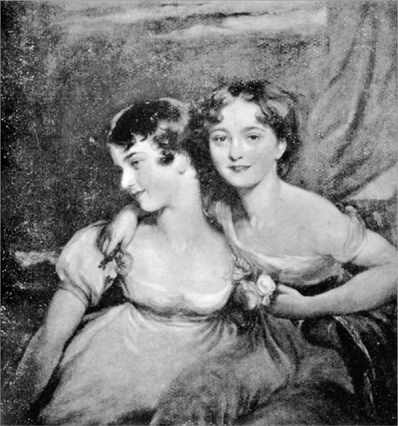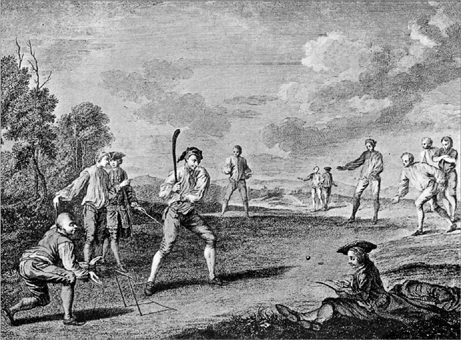Finally, the inequality between them created by his role as mentor, which might portend an ultimately incompatible marriage, is balanced by the playful and unsententious manner with which he imparts his lessons, and by the strong respect and admiration he consistently displays for her moral qualities.
The resolution of the story aptly brings together all the above aspects of the novel. It dramatically resurrects the parody elements, which had faded in the few preceding chapters, through a critical plot twist—the brutal ejection of Catherine by Henry’s father—that is a less extreme but real version of her Gothic fantasies. General Tilney reveals himself to be, if not quite a wife-murderer, nonetheless a true villain, one who behaves much like the villains of novels like The Mysteries of Udolpho in luring the heroine to his imposing and relatively isolated residence, manipulating and courting her in pursuit of her supposed fortune, and mistreating her when his mercenary ambition is thwarted (just as earlier John and Isabella Thorpe had performed modified versions of the familiar fictional roles of the brutal seducer and the false friend). The General’s actions force Catherine to experience some of the anguish of Gothic heroines, and to undertake a journey that, while not nearly as frightening or perilous as theirs, still represents a lonely and humiliating ordeal for an inexperienced girl of seventeen. Even the concluding elements that right Catherine’s fate—Henry’s brave defiance of his father in defense of love and principle and the unexpected accession to title and fortune of Eleanor’s suitor—replicate common plot twists of Gothic and sentimental fiction. Using these tropes may undermine some of Austen’s earlier parody of such fiction (something she implicitly acknowledges by humorously and almost apologetically introducing the deus ex machina of Eleanor’s lover), but it also suggests the real-world relevance of the issues and situations presented in that fiction, and thereby furthers the rationale for devoting so much of the novel to them.
Most importantly, the final scenes of Northanger Abbey shed a new light on the hero and heroine. Catherine and Henry’s conversation in Fullerton provides a partial justification for her fantasies regarding the General, as she comes to realize that “in suspecting General Tilney of either murdering or shutting up his wife, she had scarcely sinned against his character, or magnified his cruelty.” Her suspicions now appear not simply as absurd delusions that risk forfeiting the reader’s sympathy, but as the partly understandable mistakes of a girl who, confronting an imposing and far more sophisticated older man who disguises a brutal nature beneath a veneer of extravagant courtesy and flattery, tries to make sense of the discomfort and fear he arouses by resorting to categories of malevolence she has imbibed from fiction rather than ones from real life (of which she has little experience). The revelation of the General’s wickedness also alters her position in relation to the hero. Although earlier he had indignantly refuted Catherine’s Gothic fantasy, Henry had also admitted that his mother suffered from his father’s temper (a suffering that would be made more acute by the weak social and legal position of a wife in this period). Now it appears that, even with his knowledge of his father’s faults, he had underestimated the lengths to which the latter might go. Thus the episode undermines the slightly self-satisfied and condescending manner Henry has adopted at times toward Catherine—especially when he, in confessing the full extent of his father’s baseness, must undergo a humiliating penance before her, one that serves as a counterpart to her penance before him in confessing her delusions regarding his mother’s death.
The result is an ending that unites the hero and heroine in a relationship of greater equality than before. In this respect, as well as in its exploration of human characters and its many instances of sparkling humor, the novel points toward Jane Austen’s more mature fiction. She would never again use outright parody to make her points, but the enduring themes she explores here would reappear, and in Catherine she creates the first of her principal characters about whom readers, even centuries later, care deeply.
1 The rest of this introduction will include plot spoilers, for those not familiar with the novel.
2 Margaret Oliphant, The Literary History of England in the End of the Eighteenth and Beginning of the Nineteenth Century (1882).
Advertisement, by the Authoress

This little work was finished in the year 1803, and intended for immediate publication. It was disposed of to a bookseller, it was even advertised, and why the business proceeded no farther, the author has never been able to learn.1 That any bookseller should think it worth while to purchase what he did not think it worth while to publish seems extraordinary.2 But with this, neither the author nor the public have any other concern than as some observation is necessary upon those parts of the work which thirteen years have made comparatively obsolete. The public are entreated to bear in mind that thirteen years have passed since it was finished, many more since it was begun, and that during that period, places,3 manners, books,4 and opinions have undergone considerable changes.
VOLUME ONE
Chapter One
No one who had ever seen Catherine Morland in her infancy, would have supposed her born to be an heroine.1 Her situation in life, the character of her father and mother, her own person and disposition,2 were all equally against her. Her father was a clergyman, without being neglected, or poor, and a very respectable man,3 though his name was Richard4—and he had never been handsome. He had a considerable independence,5 besides two good livings6—and he was not in the least addicted to locking up his daughters.7 Her mother was a woman of useful plain sense, with a good temper,8 and, what is more remarkable, with a good constitution. She had three sons before Catherine was born; and instead of dying in bringing the latter into the world, as any body might expect, she still lived on—lived to have six children more—to see them growing up around her, and to enjoy excellent health herself.9 A family of ten children will be always called a fine family, where there are heads and arms and legs enough for the number; but the Morlands had little other right to the word, for they were in general very plain, and Catherine, for many years of her life, as plain as any. She had a thin awkward figure,10 a sallow skin without colour, dark lank hair, and strong features;—so much for her person;11—and not less unpropitious for heroism seemed her mind.12 She was fond of all boys’ plays, and greatly preferred cricket13 not merely to dolls, but to the more heroic enjoyments of infancy, nursing a dormouse,14 feeding a canary-bird,15 or watering a rose-bush. Indeed she had no taste for a garden; and if she gathered flowers at all, it was chiefly for the pleasure of mischief16—at least so it was conjectured from her always preferring those which she was forbidden to take.—Such were her propensities—her abilities were quite as extraordinary. She never could learn or understand any thing before she was taught;17 and sometimes not even then, for she was often inattentive, and occasionally stupid. Her mother was three months in teaching her only to repeat the “Beggar’s Petition”;18 and after all, her next sister, Sally, could say it better than she did. Not that Catherine was always stupid,—by no means; she learnt the fable of “The Hare and many Friends,” as quickly as any girl in England.19 Her mother wished her to learn music; and Catherine was sure she should20 like it, for she was very fond of tinkling the keys of the old forlorn spinnet;21 so, at eight years old she began. She learnt a year, and could not bear it;—and Mrs. Morland, who did not insist on her daughters being accomplished in spite of incapacity or distaste,22 allowed her to leave off. The day which dismissed the music-master was one of the happiest of Catherine’s life.23 Her taste for drawing was not superior;24 though whenever she could obtain the outside of a letter from her mother, or seize upon any other odd piece of paper,25 she did what she could in that way, by drawing houses and trees, hens and chickens,26 all very much like one another.—Writing and accounts she was taught by her father;27 French by her mother:28 her proficiency in either was not remarkable, and she shirked her lessons in both whenever she could. What a strange, unaccountable character!—for with all these symptoms of profligacy at ten years old, she had neither a bad heart nor a bad temper; was seldom stubborn, scarcely ever quarrelsome, and very kind to the little ones, with few interruptions of tyranny; she was moreover noisy and wild, hated confinement and cleanliness, and loved nothing so well in the world as rolling down the green slope at the back of the house.

A portrait of two girls.
[From The Masterpieces of Lawrence (London, 1913), p. 49]
[List of Illustrations]

A game of cricket.
[From Randall Davies, English Society of the Eighteenth Century in Contemporary Art (London, 1907), p. 72]
[List of Illustrations]
Such was Catherine Morland at ten. At fifteen, appearances were mending; she began to curl her hair and long for balls;29 her complexion improved, her features were softened by plumpness30 and colour, her eyes gained more animation, and her figure more consequence.31 Her love of dirt gave way to an inclination for finery, and she grew clean as she grew smart; she had now the pleasure of sometimes hearing her father and mother remark on her personal improvement.
1 comment